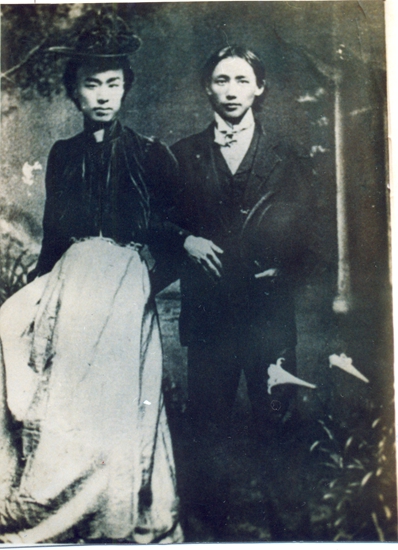
Chunliu Society's Performance The Lady of Camellias in Tokyo, Japan in 1907, Mainly by Li Shutong(Left)
The development of the Chinese modern drama goes through the process of breeding, while the symbol of its birth is the drama “Uncle Tom’s Cabin” that was put on stage in Tokyo, Japan in 1907 by the Chinese students, members of the Chunliu Troupe. However, the performance of this play is directly related to the influence of the Japanese New School Drama.
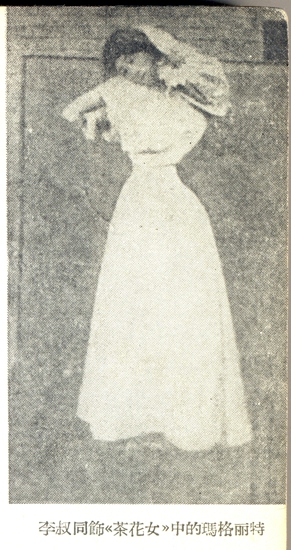
Chunliu Society' s Performance The Lady of Camellias in Tokyo, Japan in 1907, Margaret by Li Shutong(Left)
Li Shutong and Zeng Yannian had not only attended many performances of the New School Drama, but also made friends with the actors in order to learn more from the New School Drama. In 1907, Li Shutong joined the Association of Arts and Literature presided by Mr. Tsubouchi Shoyo. Zeng Yannian was a friend of Mr. Fujisawa Asajiro, a famous actor of the New School Drama. Under the influence of the New School Drama, they sighed with regret over the backward arts and literature of China and came up with the idea of setting up a troupe to perform dramas. Henceforth, they contacted other friends, with whom they founded the Chunliu Troupe in the winter of 1906 in Tokyo, Japan.
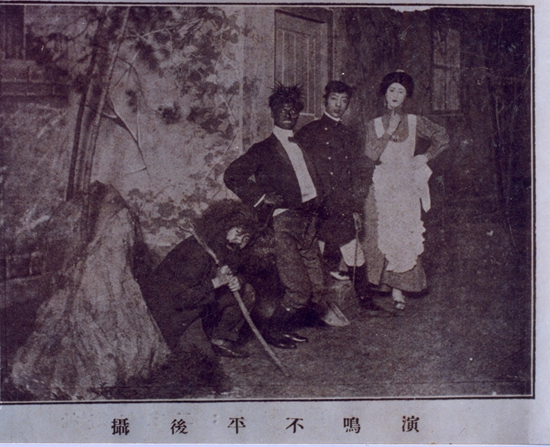
Chunliu Society' s Performance Social Status in Tokyo in 1908
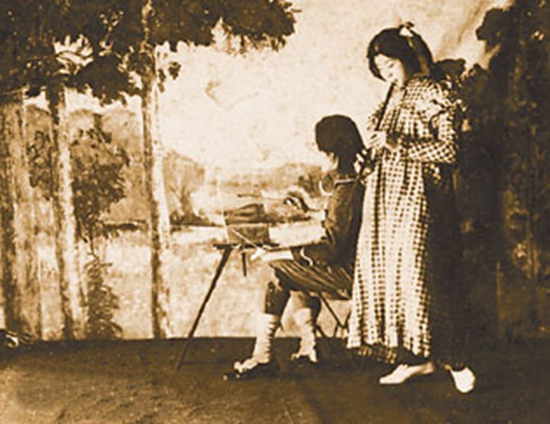
Chunliu Society' s Performance Painter and his Sister in Tokyo, Japan in 1907, Painter by Li Taohen, Sister by Ouyang Yuqian
The performances of Chunliu Troupe in Japan were also influenced by the political and art development situations of China. From the perspectives of Chinese politics and arts, it was the period in which the feudal rule of Qing Dynasty was to collapse, while the Chinese bourgeois revolution was in full swing. Since the Opium War of 1840, China was swiftly reduced to be the semi-feudal, semi-colonial society because of the invasions of imperialist powers and the decadence of the Qing Government. The national crisis deteriorated day after day and the class conflicts were intensified gradually. The Chinese people called for social reforms and expelling the invaders. The demand of toppling the feudal government of Qing Dynasty was rising to the unprecedented height. The bourgeois reformists and democratic revolutionaries met with the demands of the mass and were engaged in the enlightenment movement, unfolding the first fervor of turning to the West to seek the truth in the history of modern China. In the art and literary fields, there was the trend of reform as well. The literary movements, viz. “the revolution of poems”, “the revolution of novels” and “the reform of operas” came in succession with the increasing enthusiasm. Liang Qichao, Chen Duxiu and Liu Yazi were the representatives of those literary revolutionary campaigns.
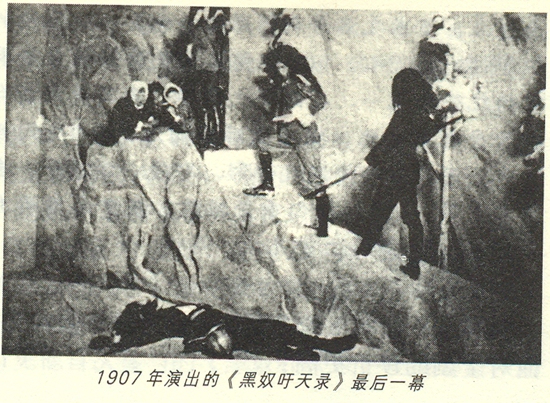
Chunliu Society' s Performance Uncle Tom's Cabin in Tokyo in June 1907
About 1910, the overseas Chinese students in Japan came back to their homeland successively and brought the influence of the New School Drama to China, which promoted the development of the early modern Chinese drama.
Macau is the place that will impress people greatly, because it is the old beautiful city that you can record everything with your heart and describe it with your emotions. It is a unique human landscape. In this city, we can sense the arteries and veins of Chinese tradition and smell its scent from A-Ma Temple and Guanyin Hall; we can sigh with regret over the ruins of Saint Paul that still emits the liveliness in the last rays of the setting sun. We can pay a visit to the Cathedral that just awakes with drowsiness in the first ray of the morning sun but is close to life; we can go to the Saint Augustine
’s Square where the romance and elegance ooze out of the flying musical notes. All these architectures in the historic center of Macau that have been listed as World Cultural Heritage in 2005 have their own stories, souls, individualities and life, where they embrace each other. Here, we can sense the harmonious co-existence between different races and come to understand the smiles of Macau natives who express sincere greetings with a tint of Cantonese dialect, while being amazed at the unprecedentedly great speed of development and the degree of internationalization of Macau. From the points of pens or brushes of experts, scholars and artists who attend the Third Cross-strait, Hong Kong and Macau Art Forum to write about Macau, we come to realize that this tiny city is carrying out the mission and has won the glory with sparkling humanity.













